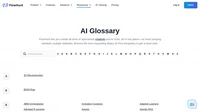Model collapse is a phenomenon in artificial intelligence (AI) where a trained model degrades over time, especially when relying on synthetic or AI-generated data. This degradation manifests as reduced output diversity, a propensity for “safe” responses, and a diminished ability to produce creative or original content.
Key Concepts of Model Collapse
Definition
Model collapse occurs when AI models, particularly generative models, lose their effectiveness due to repetitive training on AI-generated content. Over generations, these models start to forget the true underlying data distribution, which leads to increasingly homogeneous and less diverse outputs.
Importance
Model collapse is critical because it threatens the future of generative AI. As more online content is generated by AI, the training data for new models becomes polluted, reducing the quality of future AI outputs. This phenomenon can lead to a cycle where AI-generated data gradually loses its value, making it harder to train high-quality models in the future.
How Does Model Collapse Occur?
Model collapse typically occurs due to several intertwined factors:
Over-Reliance on Synthetic Data
When AI models are trained primarily on AI-generated content, they begin to mimic these patterns rather than learning from the complexities of real-world, human-generated data.
Training Biases
Massive datasets often contain inherent biases. To avoid generating offensive or controversial outputs, models may be trained to produce safe, bland responses, contributing to a lack of diversity in outputs.
Feedback Loops
As models generate less creative output, this uninspiring AI-generated content can be fed back into the training data, creating a feedback loop that further entrenches the model’s limitations.
Reward Hacking
AI models driven by reward systems may learn to optimize for specific metrics, often finding ways to “cheat” the system by producing responses that maximize rewards but lack creativity or originality.
Causes of Model Collapse
Synthetic Data Overload
The primary cause of model collapse is the excessive reliance on synthetic data for training. When models are trained on data that is itself generated by other models, the nuances and complexities of human-generated data are lost.
Data Pollution
As the internet becomes inundated with AI-generated content, finding and utilizing high-quality human-generated data becomes increasingly difficult. This pollution of training data leads to models that are less accurate and more prone to collapse.
Lack of Diversity
Training on repetitive and homogeneous data leads to a loss of diversity in the model’s outputs. Over time, the model forgets less common but important aspects of the data, further degrading its performance.
Manifestations of Model Collapse
Model collapse can lead to several noticeable effects, including:
- Forgetting Accurate Data Distributions: Models may lose their ability to accurately represent the real-world data distribution.
- Bland and Generic Outputs: The model’s outputs become safe but uninspiring.
- Difficulty with Creativity and Innovation: The model struggles to produce unique or insightful responses.
Consequences of Model Collapse
Limited Creativity
Collapsed models struggle to innovate or push boundaries in their respective fields, leading to stagnation in AI development.
Stagnation of AI Development
If models consistently default to “safe” responses, meaningful progress in AI capabilities is hindered.
Missed Opportunities
Model collapse makes AIs less capable of tackling real-world problems that require nuanced understanding and flexible solutions.
Perpetuation of Biases
Since model collapse often results from biases in training data, it risks reinforcing existing stereotypes and unfairness.
Impact on Different Types of Generative Models
Generative Adversarial Networks (GANs)
GANs, which involve a generator creating realistic data and a discriminator distinguishing real from fake data, can suffer from mode collapse. This occurs when the generator produces only a limited variety of outputs, failing to capture the full diversity of real data.
Variational Autoencoders (VAEs)
VAEs, which aim to encode data into a lower-dimensional space and then decode it back, can also be impacted by model collapse, leading to less diverse and creative outputs.
For more detailed information, you can refer to the following sources:
- Model collapse explained: How synthetic training data breaks AI
- What is AI model collapse? Definition, examples, and challenges
- AI models collapse when trained on recursively generated data



